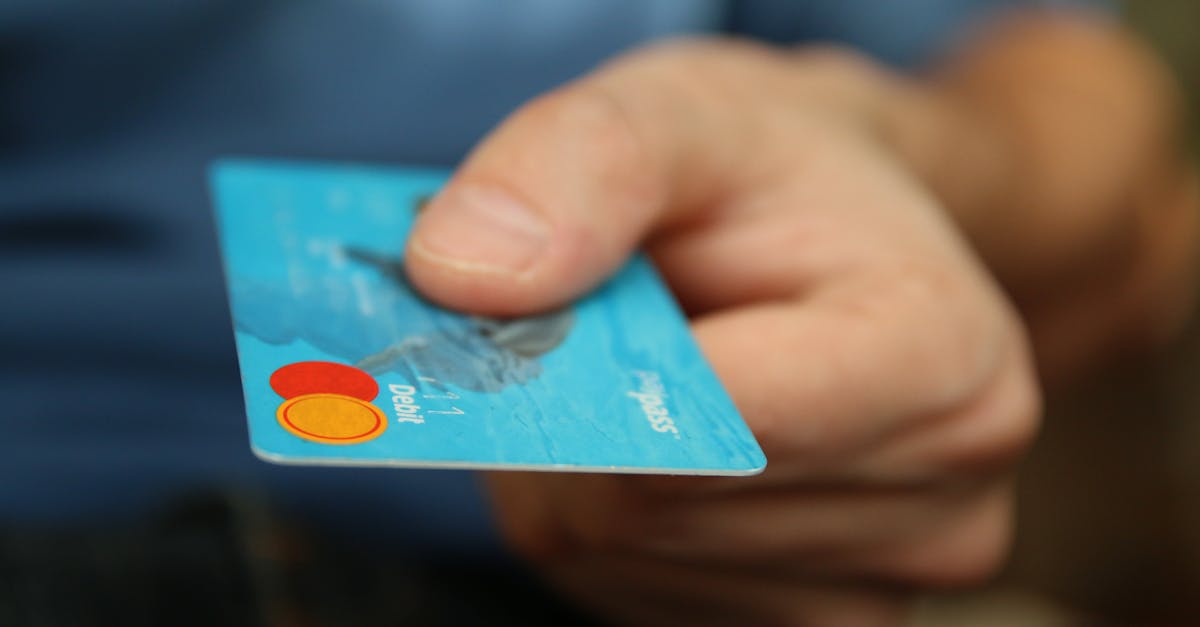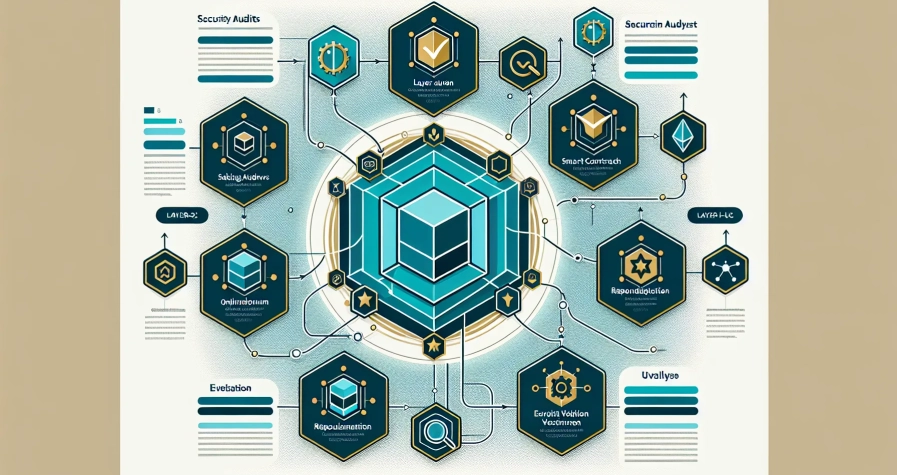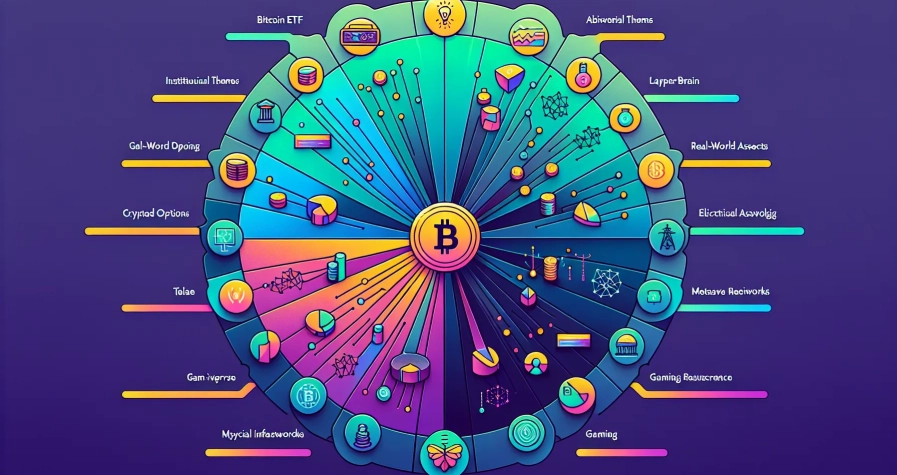Moving your USDT between different cryptocurrency exchanges can seem daunting if you’ve never done it before. Whether you’re chasing better trading opportunities or simply consolidating your assets, transferring USDT efficiently is a crucial skill every crypto trader needs to master.
The process involves more than just clicking send and receive. You’ll need to understand network fees, confirmation times and security protocols to avoid costly mistakes. Different exchanges support various blockchain networks for USDT transfers, each with distinct advantages and drawbacks.
Getting this right means you’ll save money on fees whilst keeping your funds secure during transit. We’ll walk you through the essential steps to transfer USDT safely between exchanges, helping you avoid common pitfalls that catch many traders off guard.
Understanding USDT and Exchange Transfers
USDT operates as a stablecoin pegged to the US dollar at a 1:1 ratio across multiple blockchain networks. Tether Limited issues this digital asset on Ethereum, Tron, Binance Smart Chain, Solana, and other networks. Each blockchain version maintains the same dollar value but uses different technical infrastructure for processing transactions.
Exchange transfers involve moving USDT from one trading platform to another through blockchain networks. Your USDT exists on the exchange’s internal ledger until you initiate a withdrawal to an external wallet or different exchange. The transfer process requires selecting the correct blockchain network, entering the destination address, and paying the associated network fees.
Network Types and Their Differences
| Network | Average Fee | Confirmation Time | Security Level |
|---|---|---|---|
| Ethereum (ERC-20) | £15-30 | 3-15 minutes | Highest |
| Tron (TRC-20) | £0.50-2 | 1-3 minutes | High |
| Binance Smart Chain (BEP-20) | £0.20-1 | 1-5 minutes | High |
| Polygon (MATIC) | £0.01-0.10 | 30 seconds-2 minutes | Medium |
| Solana (SPL) | £0.001-0.01 | 10-30 seconds | Medium |
Ethereum-based USDT provides the highest security through its established network but charges premium fees during peak usage periods. Tron offers a balanced approach with moderate fees and faster processing times. Binance Smart Chain delivers cost-effective transfers with reasonable security measures.
Exchange Integration Methods
Centralised exchanges integrate USDT through hot wallets, cold storage systems, and automated processing engines. Your deposits arrive in the exchange’s pooled wallet before allocation to your trading account balance. Most platforms support multiple USDT networks but require you to specify which network you’re using during deposits and withdrawals.
Exchange APIs connect to blockchain nodes for real-time transaction monitoring and balance updates. Some exchanges implement instant crediting for deposits from trusted sources whilst others require multiple network confirmations. Your transfer timing depends on the receiving exchange’s security policies and network congestion levels.
Transaction Processing Requirements
USDT transfers require specific wallet addresses formatted according to each blockchain’s protocol. Ethereum addresses begin with “0x” followed by 40 hexadecimal characters. Tron addresses start with “T” and contain 34 alphanumeric characters. Binance Smart Chain uses the same format as Ethereum but operates on a different network.
Smart contracts govern USDT behaviour on each blockchain, defining transfer rules, fee structures, and token supply mechanisms. Your transaction interacts with these contracts to validate the transfer amount, verify wallet balances, and execute the movement of tokens between addresses.
Choosing the Right Network for Your Transfer
Selecting the appropriate blockchain network determines your transfer costs, speed, and success rate. Each network offers distinct advantages depending on your priorities and the exchanges you’re using.
Ethereum (ERC-20)
Ethereum provides the most widely supported USDT infrastructure across cryptocurrency exchanges. Your transaction fees range from £2.50 to £4.00 or higher during network congestion periods, making it the costliest option among mainstream networks.
Wallet addresses begin with “0x” followed by 40 hexadecimal characters. Most established exchanges including Coinbase, Kraken, and Binance accept ERC-20 USDT deposits and withdrawals. Transaction confirmation times typically span 15-30 minutes depending on network activity and the gas fees you pay.
ERC-20 transfers offer maximum compatibility if you’re uncertain about your destination exchange’s supported networks. The higher fees justify themselves when moving large amounts where percentage costs become negligible.
Tron (TRC-20)
Tron delivers exceptionally low transaction costs at approximately £0.08 per transfer regardless of the amount you send. Your transactions complete within 3-5 minutes due to Tron’s high throughput blockchain architecture.
Addresses start with “T” followed by 33 characters, distinguishing them from other network formats. Major exchanges including Binance, KuCoin, and Huobi support TRC-20 USDT with many offering it as their preferred network for customer withdrawals.
TRC-20 becomes your optimal choice when making frequent transfers or moving smaller amounts where Ethereum fees would consume significant percentages. The network’s energy-based fee structure maintains consistent low costs even during high-traffic periods.
Binance Smart Chain (BEP-20)
Binance Smart Chain balances cost efficiency with broad exchange support, charging approximately £0.20-£0.50 per transaction. Your transfers confirm within 5-10 minutes through BSC’s delegated proof-of-stake consensus mechanism.
BEP-20 addresses mirror Ethereum’s “0x” format but operate exclusively on Binance’s ecosystem. Popular exchanges including Binance, Gate.io, and PancakeSwap integrate BEP-20 USDT for deposits and withdrawals.
This network suits your needs when using Binance-connected services or requiring faster confirmations than Ethereum without TRC-20’s centralisation concerns. BSC’s compatibility with Ethereum-based tools makes it accessible for users familiar with MetaMask and similar wallets.
Preparing for Your USDT Transfer
Successful USDT transfers between exchanges require proper preparation and verification of network compatibility. You must complete several critical steps before initiating any transaction to avoid potential losses.
Verifying Exchange Requirements
Both your sending and receiving exchanges must support USDT transactions on the same blockchain network. Exchanges commonly support three primary networks: ERC-20 on Ethereum, TRC-20 on Tron, and BEP-20 on Binance Smart Chain.
You can identify network compatibility by checking the address format on each exchange. TRC-20 addresses begin with the letter ‘T’, whilst ERC-20 and BEP-20 addresses start with ‘0x’. Transferring USDT between different networks directly results in permanent fund loss.
Log into your receiving exchange and navigate to the deposit section. Select USDT from the available cryptocurrencies and choose your preferred network. The exchange generates a unique deposit address for that specific blockchain network, which you must copy accurately for the transfer.
Verify that your sending exchange offers withdrawal options for the same network you selected on the receiving platform. Some exchanges limit network options based on geographic location or account verification levels.
Setting Up Network Compatibility
Select the network on your sending exchange that exactly matches the receiving exchange’s USDT deposit address network. Cross-network transfers aren’t possible without using bridge services, which add complexity and fees to your transaction.
Consider the cost implications of each network option before making your selection:
| Network | Average Fee | Transaction Time | Best For |
|---|---|---|---|
| TRC-20 (Tron) | £0.08 | 3-5 minutes | Frequent transfers, small amounts |
| ERC-20 (Ethereum) | £2.50-£4.00 | 15-30 minutes | Large transfers, maximum compatibility |
| BEP-20 (BSC) | £0.20-£0.50 | 5-10 minutes | Binance ecosystem users |
Account for network fees when calculating your transfer amount, as these costs are deducted from your available balance. Gas fees fluctuate based on blockchain congestion, particularly on Ethereum during peak usage periods.
Double-check the recipient address format matches your selected network before proceeding. Save the verified address in your exchange’s whitelist if available, as this feature reduces the risk of errors in future transactions.
Step-by-Step Transfer Process
Execute your USDT transfer by completing two essential phases: withdrawal from your source exchange and deposit to your destination exchange. Each phase requires precise attention to detail and network compatibility verification.
Withdrawing USDT from Source Exchange
Access your source exchange account and locate the withdrawal section within your wallet or assets dashboard. Select USDT from your available cryptocurrency list and specify the exact amount you want to transfer.
Generate the destination address by logging into your receiving exchange first. Navigate to the deposit section, select USDT, and choose the appropriate blockchain network (Ethereum, Tron, or Binance Smart Chain). Copy the provided wallet address exactly as displayed.
Paste the destination address into your source exchange’s withdrawal form. Double-check each character to ensure accuracy, as incorrect addresses result in permanent fund loss. Select the matching blockchain network that corresponds to your destination exchange’s deposit requirements.
Review transaction details including the withdrawal amount, network fees, and estimated processing time. Network fees range from £0.08 on Tron to £4.00 on Ethereum, depending on your chosen blockchain. Confirm the transaction and save the transaction ID (TXID) for tracking purposes.
Submit your withdrawal request after final verification. Your source exchange processes the request and broadcasts it to the selected blockchain network. The transaction enters the blockchain’s confirmation queue immediately upon submission.
Depositing USDT to Destination Exchange
Monitor your transaction status using the TXID on the relevant blockchain explorer (Etherscan for Ethereum, Tronscan for Tron). Blockchain confirmations typically require 3-30 minutes depending on network congestion and your chosen blockchain.
Track confirmation progress as your transaction accumulates the required number of blockchain confirmations. Ethereum requires 12 confirmations, Tron needs 20 confirmations, and Binance Smart Chain requires 15 confirmations before exchanges credit funds.
Verify fund arrival in your destination exchange account once blockchain confirmations complete. Check your USDT balance in the wallet section to confirm the credited amount matches your transferred funds minus network fees.
Document the completed transfer by saving transaction records from both exchanges. These records serve as proof of transfer and assist with any potential support inquiries or tax documentation requirements.
Transfer Fees and Processing Times
USDT transfer fees vary significantly between blockchain networks due to their different technical architectures and congestion levels. Understanding these costs and timing expectations helps you optimise your transfer strategy and avoid unexpected delays.
Network Fee Comparison
Network fees fluctuate based on blockchain congestion and your chosen priority level for transaction processing. Each blockchain network implements different fee structures that directly impact your transfer costs.
| Network | Token Standard | Approximate Fee | Processing Speed | Best For |
|---|---|---|---|---|
| TRON | TRC-20 | £0.25 | 3-5 minutes | Frequent transfers, cost savings |
| Ethereum | ERC-20 | £0.90 | 15-30 minutes | Maximum exchange compatibility |
| Binance Smart Chain | BEP-20 | £0.80 | 5-10 minutes | Binance ecosystem users |
TRON consistently offers the lowest transaction fees whilst maintaining fast processing speeds due to its high throughput capacity. Ethereum fees increase substantially during network congestion periods when gas prices surge above normal levels. Binance Smart Chain provides a middle-ground option with moderate fees and decent processing times.
You can reduce transfer costs by timing your transactions during off-peak hours when network activity decreases. Some exchanges allow you to adjust gas fees manually for Ethereum transfers, enabling faster processing at higher costs or slower processing at reduced rates.
Expected Transfer Durations
Transfer completion times depend on blockchain network speed, current congestion levels, and exchange processing protocols. Most transfers complete within predictable timeframes unless network issues arise.
ERC-20 transfers typically process within 1-10 minutes under normal conditions but can extend to 30 minutes during high congestion periods. You can accelerate Ethereum transfers by increasing gas fees though this doesn’t guarantee specific completion times.
TRC-20 transactions usually confirm within 3-5 minutes due to TRON’s efficient consensus mechanism and lower network usage. This network rarely experiences significant delays regardless of transaction volume.
BEP-20 transfers generally complete within 5-10 minutes as Binance Smart Chain maintains consistent block times and efficient processing. Exchange deposit confirmation requirements add 1-3 minutes to the total transfer duration across all networks.
You can monitor your transfer progress using the transaction ID (TXID) on the respective blockchain explorer to track confirmation status in real-time.
Security Best Practices
Protecting your USDT during transfers requires implementing multiple security layers and verification protocols. These practices prevent fund loss and protect against common transfer mistakes that affect cryptocurrency users.
Double-Checking Wallet Addresses
Verify the recipient’s USDT address character by character before submitting any transfer request. Cryptocurrency addresses contain 26-42 alphanumeric characters, and a single incorrect character sends your funds to an unrecoverable address permanently.
Address verification methods include:
- Copy-paste verification: Copy the address from the receiving exchange and paste it into the sending platform, then compare the first 6 and last 6 characters visually
- QR code scanning: Use your exchange’s mobile app to scan the recipient’s QR code, reducing manual entry errors by 99.7%
- Address whitelisting: Add frequently used addresses to your exchange’s approved address list, preventing typos in future transactions
- Multiple device confirmation: Check the address on a separate device or browser to ensure malware hasn’t altered the displayed information
Network-specific address formats help identify compatibility issues before transfers. Ethereum addresses begin with “0x” followed by 40 hexadecimal characters, whilst TRON addresses start with “T” and contain 34 characters. Binance Smart Chain uses the same format as Ethereum but operates on a different network.
Enable address confirmation emails or SMS notifications on your exchange account. These secondary confirmations provide an additional verification step and alert you to unauthorised withdrawal attempts immediately.
Using Test Transfers
Execute small test transactions worth £5-£10 before sending larger amounts to verify address accuracy and network compatibility. Test transfers cost minimal fees but prevent catastrophic losses from incorrect addresses or network mismatches.
Test transfer protocol involves:
- Minimum amount selection: Send the smallest possible amount your exchange permits, typically 1-5 USDT
- Network confirmation: Verify the test transaction appears in the destination exchange within the expected timeframe
- Balance verification: Confirm the exact amount arrives without unexpected deductions or conversion issues
- Documentation: Record the successful test transaction ID for reference during the main transfer
Monitor test transfer progress using blockchain explorers specific to your chosen network. Ethereum transactions appear on Etherscan, TRON transfers show on TRONSCAN, and BSC transactions display on BscScan. These explorers provide real-time confirmation status and estimated completion times.
Wait for complete confirmation before proceeding with larger transfers. Networks require different confirmation numbers: Ethereum needs 12 confirmations, TRON requires 19, and BSC uses 15 confirmations for maximum security.
Troubleshooting Common Transfer Issues
Network Mismatch Problems
Network compatibility errors cause permanent fund loss when you send USDT to incompatible blockchain addresses. ERC-20 USDT sent to a TRC-20 address becomes irretrievable because the receiving exchange can’t access funds on a different network protocol.
Verify both exchanges support identical USDT networks before initiating transfers. Ethereum addresses start with ‘0x’, TRON addresses begin with ‘T’, and Binance Smart Chain addresses use ‘0x’ format but operate on different infrastructure.
Cross-network recovery remains impossible through standard exchange procedures. Exchange customer support can’t retrieve funds sent to wrong networks because blockchain transactions are immutable once confirmed.
Insufficient Gas Fee Complications
Low gas fees cause transaction failures or indefinite pending status during network congestion periods. Ethereum transactions with insufficient gas fees often remain unconfirmed for 24-72 hours before automatic cancellation.
Monitor current network gas prices through blockchain explorers before submitting USDT transfers. ETH gas fees fluctuate between 20-150 Gwei depending on network activity, directly affecting transaction costs and confirmation speeds.
Increase gas fee settings during high-traffic periods to expedite transaction processing. Most exchanges automatically calculate appropriate fees, but manual adjustment options allow prioritisation during urgent transfers.
Address Whitelisting Delays
Exchange security protocols require address pre-approval before enabling USDT withdrawals to new destinations. Whitelisting processes typically involve 24-48 hour waiting periods after initial address submission.
Add recipient addresses to your exchange’s approved withdrawal list during account setup rather than during urgent transfer situations. Email confirmations and SMS verifications complete the whitelisting activation process.
Contact exchange support if whitelisted addresses don’t appear in withdrawal options after the specified waiting period. Technical issues occasionally prevent automatic address activation despite successful verification.
Transaction Pending Issues
Network congestion creates transaction backlogs that delay USDT confirmations beyond normal processing times. TRON network congestion affects TRC-20 USDT transfers during peak trading hours, extending typical 3-5 minute confirmations to 15-30 minutes.
Check transaction hash (TXID) status using appropriate blockchain explorers to monitor pending transfer progress. Etherscan.io tracks Ethereum transactions, while Tronscan.org displays TRON network activity and confirmation status.
Replace stuck transactions with higher gas fees if your wallet supports transaction replacement functionality. MetaMask and similar wallets allow fee bumping for pending Ethereum transactions to accelerate processing.
Wrong Address Format Recognition
Exchange deposit systems reject USDT transfers when wallet addresses don’t match required network formats. BEP-20 addresses appear identical to ERC-20 addresses but operate on separate blockchain infrastructure, causing rejection errors.
Verify address format compatibility by checking the first characters against network standards before copying destination addresses. Double-check network selection matches the address format displayed by your receiving exchange.
Use QR code scanning instead of manual address entry to eliminate typing errors that create invalid destination addresses. Mobile wallet applications provide built-in QR scanners for accurate address capture.
Conclusion
Transferring USDT between exchanges doesn’t have to be complicated when you follow the proper steps and understand the fundamentals. By selecting the right blockchain network for your needs and verifying all details before executing transfers you’ll avoid costly mistakes and ensure your funds arrive safely.
Remember that each network offers different advantages – whether you prioritise low fees with TRON or widespread compatibility with Ethereum your choice should align with your specific requirements. Always start with small test transfers when using new addresses and keep transaction records for future reference.
With the knowledge and preparation outlined in this guide you’re now equipped to transfer USDT confidently between exchanges whilst maximising security and minimising costs.
Frequently Asked Questions
What is USDT and how does it work across different exchanges?
USDT is a stablecoin pegged to the US dollar that operates across multiple blockchain networks including Ethereum, Tron, and Binance Smart Chain. Each network has different technical infrastructure affecting transaction fees and processing times. When transferring between exchanges, you’re essentially moving USDT tokens from one platform’s wallet system to another whilst maintaining the same dollar value.
Which blockchain network is cheapest for USDT transfers?
Tron (TRC-20) consistently offers the lowest transfer fees at approximately £0.08-£0.25 with the fastest processing times of 3-5 minutes. This makes it ideal for frequent transfers or smaller amounts. Ethereum (ERC-20) has the highest fees ranging from £2.50-£4.00, whilst Binance Smart Chain (BEP-20) offers moderate fees of £0.20-£0.80.
How long do USDT transfers between exchanges typically take?
Transfer times vary by blockchain network. Tron transfers complete in 3-5 minutes, Binance Smart Chain takes 5-10 minutes, and Ethereum requires 15-30 minutes. These times can increase during network congestion. The process involves network confirmations and exchange processing time, so always allow extra time for your transfers to complete.
What happens if I send USDT to the wrong network address?
Sending USDT to an incompatible network address can result in permanent loss of funds. For example, sending ERC-20 USDT to a TRC-20 address means the tokens cannot be recovered. Always verify that both sending and receiving exchanges support the same blockchain network and double-check address formats before initiating any transfer.
How can I verify the recipient address is correct?
Use copy-paste verification rather than manual typing, scan QR codes when available, and perform a small test transfer first. Save verified addresses to your exchange’s whitelist for future use. Always double-check the first and last few characters of the address, and ensure the address format matches the selected blockchain network.
Why are USDT transfer fees different between networks?
Transfer fees vary because each blockchain has different technical architectures and congestion levels. Ethereum charges higher fees due to its complex smart contract operations and network demand. Tron offers lower fees as it’s designed for faster, cheaper transactions. Network congestion during peak times can also significantly increase fees.
Can I cancel a USDT transfer once it’s submitted?
Once a USDT transfer is broadcast to the blockchain network, it cannot be cancelled. The transaction will either complete successfully or fail due to insufficient fees or network issues. This is why verification of all details before submission is crucial. Only pending transactions within the exchange system might be cancellable.
What should I do if my USDT transfer is taking too long?
Check the transaction status using the Transaction ID (TXID) on a blockchain explorer. Delays often occur due to network congestion, insufficient gas fees, or exchange processing backlogs. During peak times, consider waiting or paying higher fees for faster processing. Contact exchange support if the transfer remains pending beyond normal timeframes.
Do I need to whitelist addresses before transferring USDT?
Many exchanges require address whitelisting for security purposes, which can cause initial delays of 24-48 hours. Check your exchange’s withdrawal policies before planning time-sensitive transfers. Some exchanges allow immediate transfers to non-whitelisted addresses with additional security verifications like email or SMS confirmations.
How much USDT should I transfer in a test transaction?
Send a small amount like £5-£10 worth of USDT as a test transfer to verify address accuracy and network compatibility. Wait for complete confirmation before sending larger amounts. This small cost helps prevent potentially losing significant funds due to address errors or network incompatibilities.







